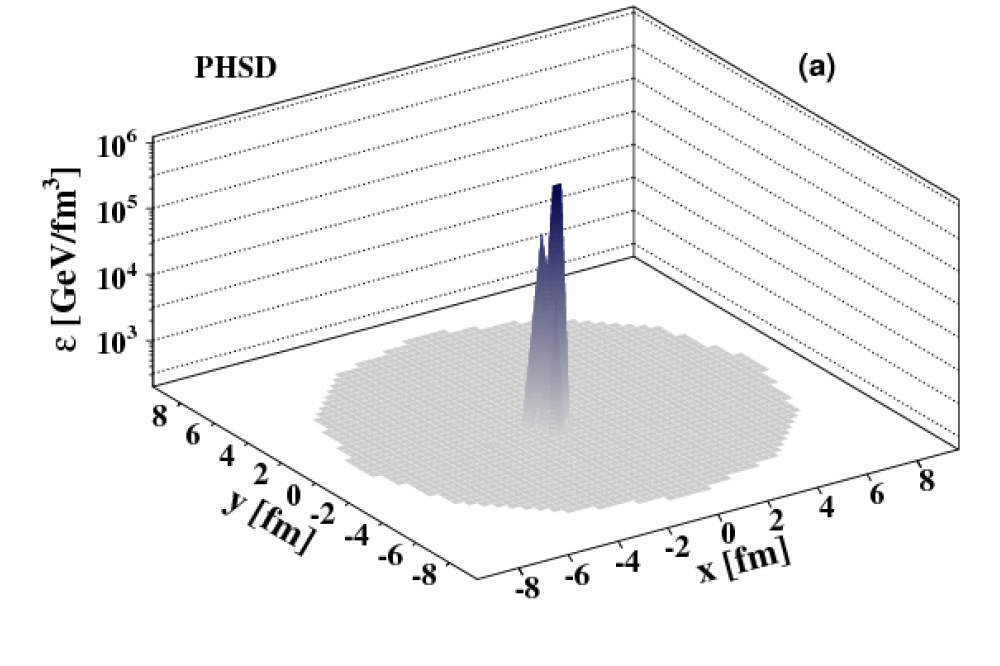p-Pb collisions at 5.02 TeV in the PHSD Transport Approach
Introduction
The Parton Hadron String Dynamics (PHSD) transport model that successfully describes the evolution of relativistic heavy-ion collisions from Alternating Gradient Synchrotron (AGS) to Relativistic Heavy-Ion Collider (RHIC) energies is employed for p-Pb collisions at collision energy 5.02 TeV and compared to recent experimental data from the Large Hadron Collider (LHC).
Methods
Ultra-relativistic nucleus-nucleus collisions provide an opportunity for exploring strongly interacting QCD matter under extreme conditions. The complexity of heavy-ion collisions is reduced essentially in the case of proton-nucleus collisions owing to the expected dominance of the initial state effects. The energy density Ε in local cells from PHSD is presented in the figure in the transverse (x – y) plane (a) as well as the reaction (x – z) plane (b) for a single p-Pb event at collision energy 5.02 TeV. Here we have selected an event that leads to about 300 charged hadrons in the final state. The time of this event (t = 0.002 fm/c) corresponds to the moment when the proton has passed the Lorentz contracted nucleus and is very small compared to the initial times considered for hydrodynamical models (~0.5 - 1 fm/c).
Results
Note that the energy density at this moment is huge due to the fact that the spacial volume is very tiny (~5 ∙ 10–3 fm3 ) and the full inelasticity of the previous inelastic reactions is incorporated. Due to the Heisenberg uncertainty relation this energy density cannot be specified as being due to 'particles' since the latter may form only much later on a timescale of their inverse transverse mass (in their rest frame). The maximal energy density in the p-Pb reaction (at t = 0.002 fm/c) is comparable with that in heavy-ion collisions at the LHC energy for local cells due to fluctuations of the initial conditions in PHSD (in case of a high spatial resolution). Note that the formed high energy density "tube" is strongly Lorentz contracted along the collision axis z and is reminiscent of the energy density in a 'string' that stretches in the longitudinal direction with increasing time.
Outlook
In (Konchakovski et al.)[1] we have focused on the question of initial state dynamics, i.e. if the initial state might be approximated by a superposition of independent nucleon-nucleon collisions or should be considered as a coherent gluon field as predicted within the color glass condensate (CGC) framework.





